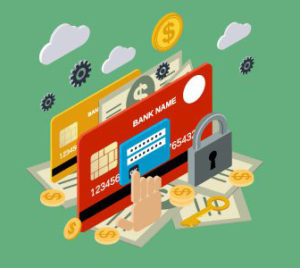
January 16, 2018 – By Ben Luthi

“Credit card companies are wary before and after a bankruptcy discharges,” said Katie Ross, education and development manager for American Consumer Credit Counseling. “[A bankruptcy] tells a lender or card issuer that you have failed to meet your financial obligations.”
What’s more, predatory lenders know your options are limited and swoop in with offers of guaranteed approval. But such offers often come with outrageous fees and interest rates.
Credit cards are great for rebuilding credit after bankruptcy. However, you have to choose wisely. Here are some rules to live by.
How to Select the Best Credit Cards After Bankruptcy
To select the best credit cards after bankruptcy, make sure you follow these tips.
1. Don’t Take the First Credit Card Offer That Comes Your Way
Credit bureaus don’t just gather and store your credit information; they also sell it to credit card companies and other financial institutions
So, once your bankruptcy has been discharged and your credit report has changed, expect to get a flood of preapproval offers from credit card companies. Some of these offers might not be too bad, but others can be downright predatory.
For example, Credit One Bank offers unsecured credit cards after bankruptcy. These cards don’t require a security deposit, but you might pay an ongoing annual fee of up to $99. What’s more, you might not get a grace period between your statement date and due date, which is standard for all major credit card companies.
Even if the first offer you see is a good one, there’s no guarantee you’ll get approved. Some credit card companies have a hard-and-fast rule against approving an application if you’ve gone through a bankruptcy. So, double-check with the credit card company before applying..
2. Go for Secured Credit Cards First
Lenders that offer unsecured credit cards after bankruptcy make up for the risk with high fees and interest, not to mention terrible terms and conditions.
A secured credit card functions like a conventional credit card. The only difference is the security deposit, which is usually equal to your desired credit limit. This deposit acts as collateral in case you default on your payments.
Putting up a security deposit might not be ideal, especially if you’re struggling to make ends meet. But in the long run, it’s worth avoiding a predatory product. Most credit card companies return your deposit when you close your account. And some, such as the Discover it Secured, offer to give it back earlier.
3. Pick Credit Cards With Worthwhile Features
“It will be difficult to work with banks after a bankruptcy,” said Ross. “And for those that will work with you, the terms will be less than adequate.”
That said, not all credit cards after bankruptcy are terrible. And some offer features that rival those of much better credit cards.
For example, the Discover it Secured credit card offers cash-back rewards. You’ll get 2 percent cash back at restaurants and gas stations on up to $1,000 in combined purchases each quarter and 1 percent cash back everywhere else.
Plus, Discover will double the cash back you earn the first year, so your base rewards rate is effectively 2 percent. That’s a higher rewards rate than you’ll find on many credit cards reserved for people with excellent credit. The card also charges no annual fee.
Another secured card, the First Progress Platinum Prestige, offers a 9.99% APR. That’s much lower than the average 14.89% APR for credit cards that assess interest, according to the Federal Reserve. This card does charge an annual fee of $49, however.
QUICK TIPS FOR REBUILDING CREDIT AFTER BANKRUPTCY
Rebuilding credit after bankruptcy won’t take forever. You’ll soon be eligible to apply for better credit cards and get your deposit back.
To help you speed up the process, here are a few tips to build your credit faster.
Keep Your Balance Low
Your credit utilization, which is calculated by dividing your balance by your credit limit, is a key element in your credit score. Try to keep it below 30 percent each month when your statement ends.
Pay Off Your Balance on Time and in Full
Carrying a balance from month to month doesn’t help your credit, but paying on time does.
Avoid interest and rebuild your credit by paying off your balance in full by your due date each month.
Don’t Borrow Too Much Too Quickly
The fact that you can start borrowing again doesn’t mean you should.
Taking on too much debt after bankruptcy can put you right back where you started, hurting your financial future and credit history.
Ease Into New Credit Cards After Bankruptcy
It’s not easy to get excited about applying for credit cards after bankruptcy. You won’t find many secured credit cards that offer rewards at all, let alone a sign-up bonus.
But as you find the right credit card and start rebuilding your credit, it’ll be easier to qualify for a better card before you know it. In the meantime, stick with one card. Adding more cards to the mix might boost your credit slightly, but it likely isn’t worth the extra temptation to spend.

